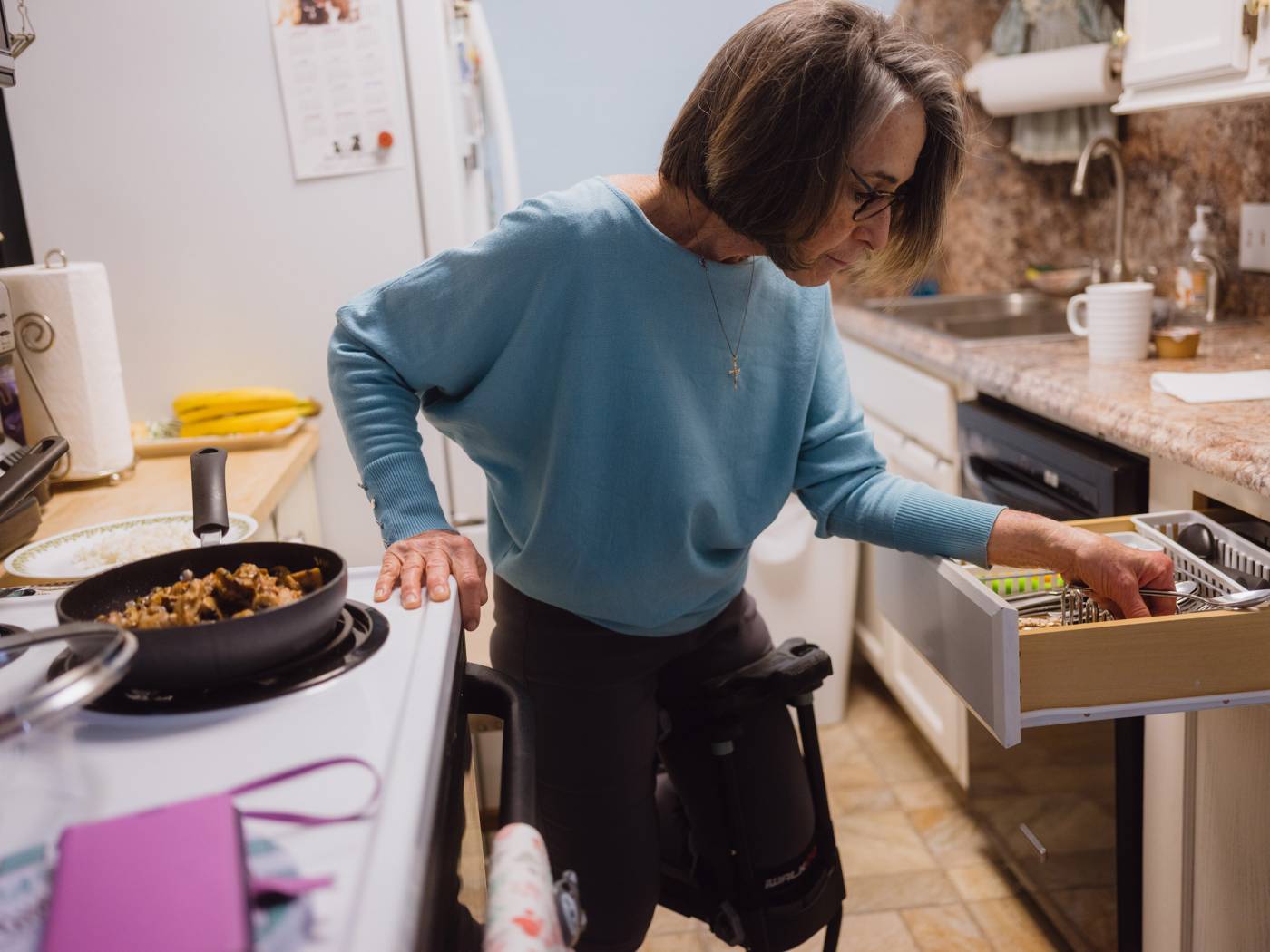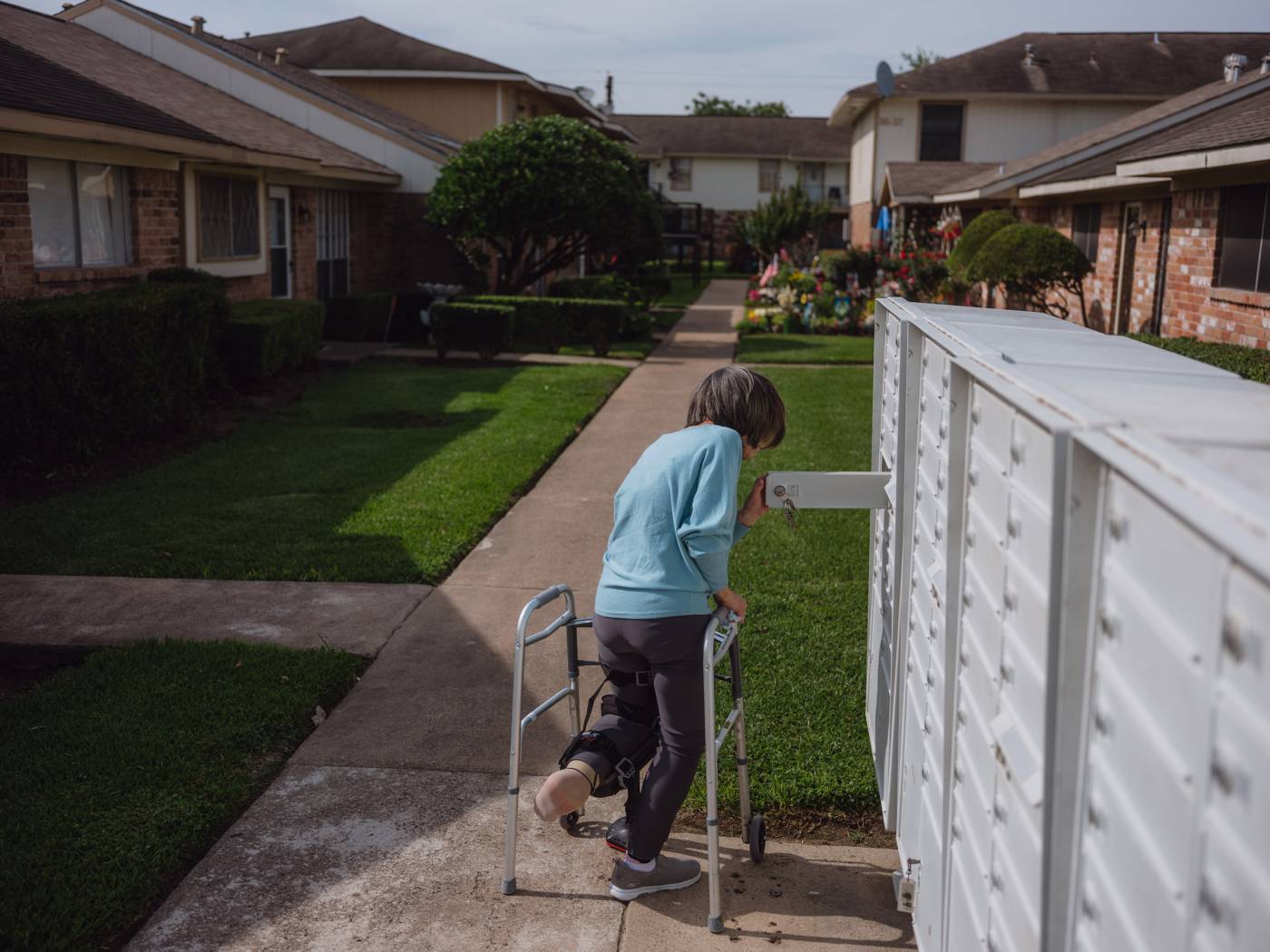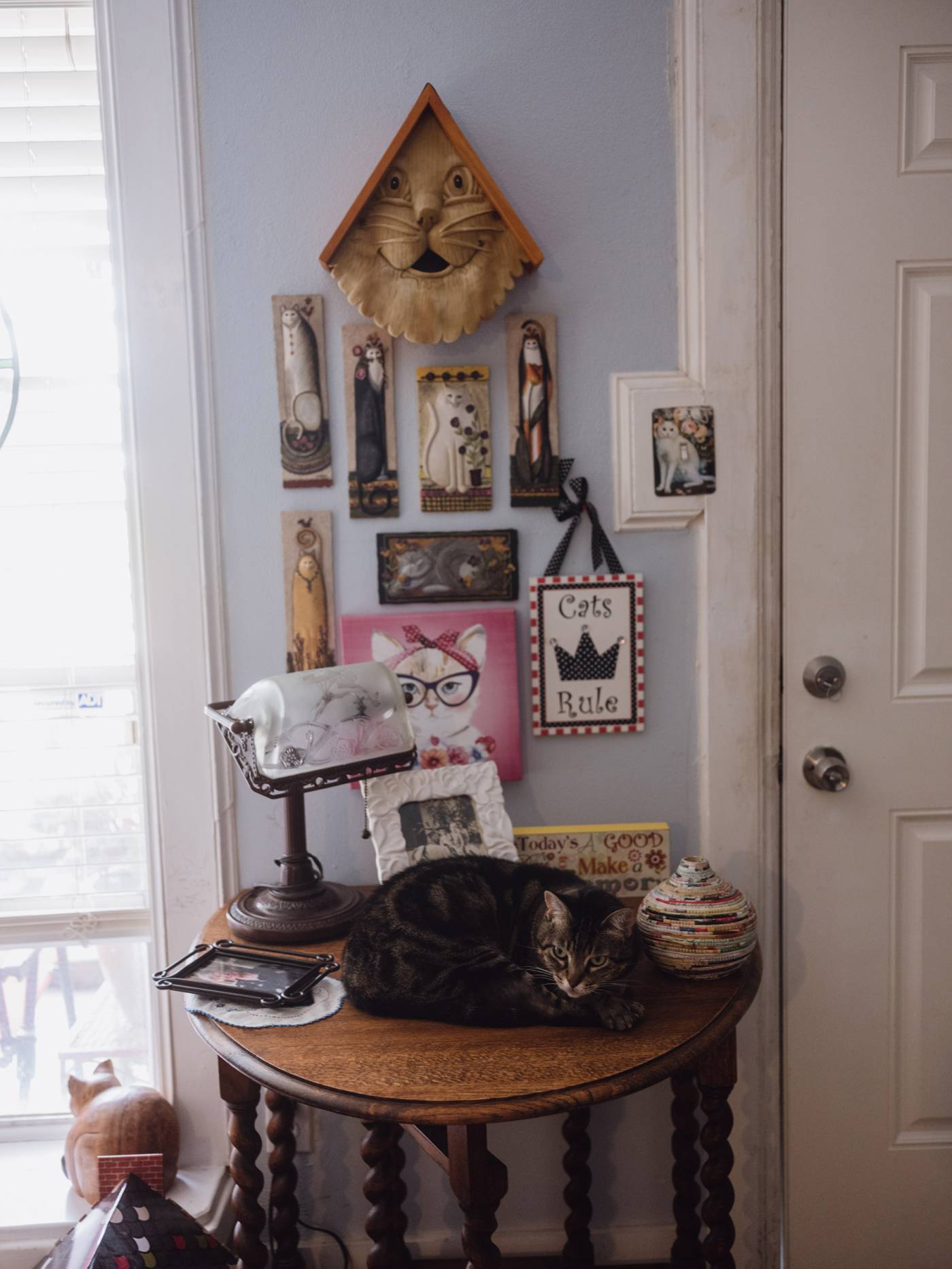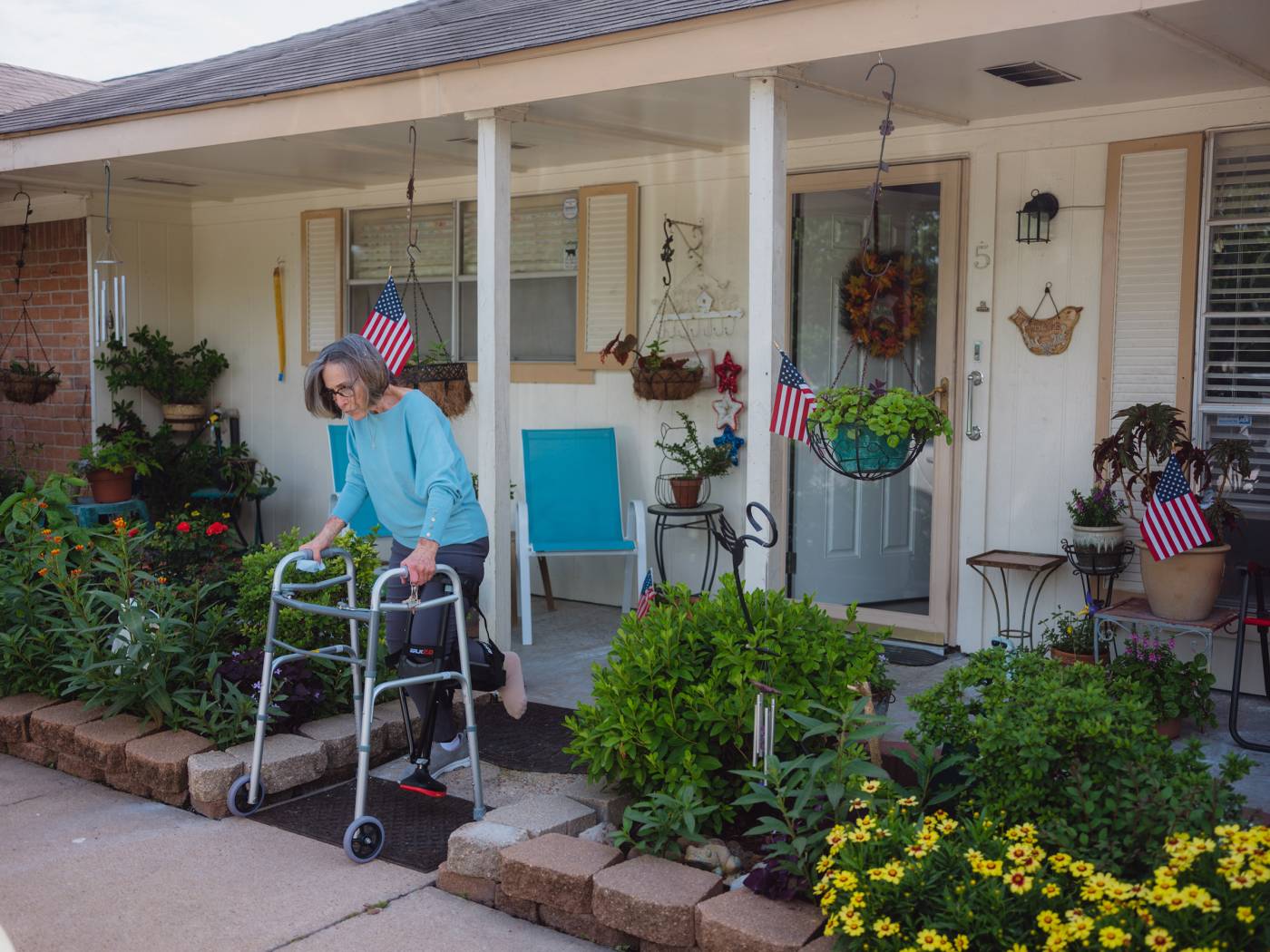How COVID-19 Exposed the Faults in America’s Elder Care System. This Is Our Best Shot to Fix Them
It turned out the virus had already been circulating among Life Care’s residents for weeks by the time administrators took action, and soon it was tearing through the facility. By March 5, at least nine residents had already died of COVID-19, and a group of families whose loved ones were still inside held a desperate press conference. “Our families are dying. We don’t know what to do. Our calls for help aren’t working,” Kevin Connolly, whose father-in-law lived in the facility, told reporters. “We have limited resources to battle this disease, and I think somebody somewhere decided that this population of people wasn’t worth wasting resources on.”
Many long-term-care experts would say Connolly was right. The pace at which that first U.S. coronavirus outbreak spread through Life Care, killing dozens of residents in weeks, shocked the public. But for those familiar with long-term care, it wasn’t surprising. “We really failed in a lot of ways, historically but also during this pandemic, to value older adults,” says David Grabowski, a professor at Harvard Medical School and an expert on long-term care. That is to say, the U.S. health care system basically left its nursing-home residents as sitting ducks for a viral pandemic like COVID-19.
Nursing homes and other group facilities are inherently petri dishes for pathogens. People with frail health frequently share rooms and rely on workers to help them bathe, eat and get out of bed. The staff perform physically and emotionally taxing work for little pay and few benefits, which means they often work for multiple facilities to make ends meet, potentially spreading infections further, as the CDC found was the case with Life Care.
Even before the pandemic began, the low pay and tough working conditions had led to high turnover among U.S. nursing-home workers, and facilities struggled with infection control.
This wasn’t the case around the world. Many wealthy countries have smaller group homes with more private spaces and highly trained care workers, and generally spend more on their elders. In Denmark, for example, which spends 2.5% of its GDP on a universal long-term-care system compared with the U.S.’s 0.8%, deinstitutionalizing care has been prioritized. Even when Danes do live in nursing homes, they often have individual apartments—perhaps one reason that by February 2021, the country had recorded fewer than 950 deaths among nursing-home residents, while in the U.S., as of mid-May, more than 132,000 long-term-care facility residents had died from COVID-19, accounting for nearly 25% of the country’s total coronavirus fatalities. This horrific toll sent the nursing-home industry into free fall, with occupancy rates plummeting 14% from first quarter 2020 to first quarter 2021 as new admissions dropped, according to the National Investment Center for Seniors Housing & Care research group.
The nursing-home industry says that it has lost tens of billions of dollars during the pandemic and that many facilities are in danger of closing. COVID-19 vaccines have improved things, but images of last year’s destruction may not fade quickly for people who need care or for their families. The pandemic has thrown into relief concerns that advocates, experts, workers, industry reps and patients have long raised about long-term-care facilities, and it has created a unique moment, they say, to reconsider how the country can better care for people outside those settings in the future.
“What we collectively realized [during the pandemic] is that we’re all isolated and dealing with the same struggles because of a lack of care infrastructure in this country to support our ability to take care of the people that we love, particularly as we’re working,” says Ai-jen Poo, co-director of Caring Across Generations, which advocates to strengthen the long-term care system. “It’s really a once-in-a-lifetime opportunity to update our public policy, our systems and our infrastructure for the next era.”
Ideally, all older adults and people with disabilities would be able to choose their care based on what they, along with family members or case managers, believe is most appropriate—and not on cost. Yet, unlike most other rich countries, the U.S. does not provide a public long-term-care benefit for everyone who needs it. The result is a system that is fragmented. Care is often siloed into two categories, medical treatments and social/personal support; under-financed; and frequently leaves people with little choice about their care. Many end up in group homes when there is no clinical reason for them to be there, and those who do stay at home often struggle to find or afford enough professional care to meet their needs, instead relying on unpaid family caregivers.
One of the biggest challenges is paying for care. Medicare, the federal program that provides health insurance for seniors, does not cover most long-term services. Instead, Medicaid, the federal-state program that covers the health care of very low-income Americans, ends up being the primary payer for long-term care. But in most states, older adults must have a monthly income under $2,382 and $2,000 or less in assets to qualify. That leaves many middle-income Americans with too much money for Medicaid but unable to afford expensive care. Roughly 8 million seniors fall into this category, a number expected to reach 14.4 million by 2029, according to a Health Affairs study co-authored by Grabowski.

In addition, Medicaid has a historical structural bias toward institutions. While Medicaid is required to cover care in group facilities (for those who do qualify), there’s no coverage mandate for care delivered in people’s individual homes. States have started to shift their Medicaid spending toward home- and community-based services over the past decade, but the amount and type of home care available still varies widely by state.
Further, states can cap Medicaid enrollment, creating long waiting lists for home-based care. There were 820,000 Americans on such lists in 2018, the most recent year for which data is available, according to the nonpartisan Kaiser Family Foundation. The average wait time is 39 months, and many people see their health deteriorate or die before they get help, says Nicole Jorwic, senior director of public policy for the Arc, a nonprofit that supports people with disabilities.
That long wait is in part due to a scarcity of home health aides and nurses in the U.S., a trend further exacerbated by the pandemic. Dottie Walden, 74, saw the shortage firsthand this year when she tried to find help in rural Georgia while caring for her husband Joe, who had a stroke in 2015 and a feeding tube inserted last winter right before the pandemic began in earnest. For the past year, she’s spent every day bathing, feeding and moving him around their home—even when lifting him caused her to pull her own back. When Dottie started looking for help this spring after she realized she could no longer move him safely, it took a local care coordinator contacting three home-care agencies and waiting more than four weeks to find a company that had enough staff to cover Joe’s needs. “It’s so dangerous for me to even go out here to the grocery store for a few minutes and leave him. You walk out the door, and you don’t know when you come back in what you’re going to find,” Dottie says. “You’re thinking every night, Maybe tomorrow will be the day that I will have some help. It just really takes a toll on you.”
The financing issues that make it tough for families to afford care also constrain what care workers can make, as Medicaid pays rates the industry has long complained are too low. Home-care workers earn a median hourly wage of $12.60, according to the Bureau of Labor Statistics. More than 15% live in poverty, and more than half rely on some form of public assistance like food stamps, according to the Paraprofessional Healthcare Institute (PHI), a nonprofit that advocates for long-term-care jobs. Tracey Richards has been a home-care worker in Las Vegas for over 15 years, making $9 to $10 an hour for most of that time. This March, she switched agencies and now makes $13 per hour. Even with the raise, Richards can’t afford health care for herself, let alone save for the future. “I cry about it at night,” she says. Richards says she knows her work is essential and she deserves to be paid a wage that reflects it—she also knows she could make more money doing another job, but she doesn’t want to leave the clients who rely on her. “They don’t have anyone else,” she says.
Most home-care workers look like Richards: 9 in 10 are women, and nearly two-thirds are people of color. They’ve been trying to advocate for better pay and working conditions for years, but long-standing racism and sexism has led the country to undervalue this work and made change slow, says April Verrett, president of SEIU Local 2015 in California, the country’s largest union of long-term-care workers.
These efforts may soon get a lift. President Joe Biden has proposed spending $400 billion over eight years on home care for the elderly and people with disabilities as part of the infrastructure plan he hopes Congress will pass this summer. While that isn’t enough to fix all the problems with long-term care—and it’s not clear whether the funding will make it through negotiations with Republicans—it would be the biggest investment in this kind of care in more than half a century.

Biden’s economic stimulus passed in March included a one-year investment of $12.7 billion for these kinds of home-and community-based services, but Jorwic sees that as “filling holes in a sinking ship” after the stress the pandemic put on care providers. She’s heard from states that are wary of using that funding to make significant changes to their home-care programs because the money runs out after a year. Even beginning to permanently improve home care, she says, will require the kind of funding Biden has proposed in his infrastructure plan.
The problems with long-term care are only getting more urgent. Some 10,000 Americans turn 65 every day, and the Census Bureau projects the number of seniors will reach 94.6 million by 2060, with the majority expected to need long-term-care services at some point. Retirement savings have not kept up with lengthening life expectancies. After a year and a half of a pandemic that drove millions of women out of the workforce, advocates are also making the case that addressing the simmering care crisis is key to the nation’s economic recovery.
As lawmakers look to change the country’s long-term-care system, advocates and researchers are exploring creative solutions to tackle not only the issues of access to care and worker pay, but also the kinds of care Americans receive in their homes. Right now, Medicare and Medicaid each pay only for specific services, and individuals must navigate complex systems to find support, which means their doctors don’t always talk to other care-givers, and medical care is often siloed from other social and personal support someone might need. A better system might align all these services under one payer, says Rachel Werner, a professor of medicine at the University of Pennsylvania, so that providers are incentivized to help manage all parts of their patients’ care and could keep them in their own homes, which is typically the least expensive setting. One such program is CAPABLE, or Community Aging in Place—Advancing Better Living for Elders, a model developed by researchers at Johns Hopkins University (JHU) that offers low-income seniors regular visits from a nurse, an occupational therapist and a home-repair person over the course of about four months.
Sarah Szanton, a professor at JHU’s School of Nursing, came up with the idea over a decade ago, when she was a nurse practitioner treating homebound patients. She saw clients who had developed coping mechanisms to stay at home—like crawling around the kitchen because their wheelchair wouldn’t fit through the door frame—that were making their lives less enjoyable and more dangerous. While it was important to treat conditions such as diabetes or congestive heart failure, she realized that holistic, often non-medical interventions like teaching someone to shower on their own or finding a new way to reach the second floor of their house were just as important.
The CAPABLE program has grown significantly over the past few years. It now has 33 sites across 18 states, and Szanton and her colleagues have strong evidence the model works. Studies have shown it reduces hospitalizations, depression and the number of functions with which participants report struggling. Federal evaluators found the program saves both Medicare and Medicaid roughly $10,000 per year per participant. And because it can help some people function more independently in their own homes for years or even avoid a nursing home permanently, Szanton believes it could stretch the country’s current supply of care workers.

Her collapsed foot and weak knee were making it increasingly difficult to walk, and the health care she was getting was depleting what little money she had left, but at least she managed to return to her own condo outside Houston after each accident. “I don’t ever want to end up in a nursing home,” she says. The pandemic heightened that fear, but fortunately, Thompson’s primary care provider, Village Medical at Home, wanted to try CAPABLE for some of its patients. Starting in December, the program’s staff helped Thompson develop personalized goals like climbing in and out of her tub without falling and cooking dinner safely without getting too tired to eat; facilitated long-needed doctor appointments; and paid for necessary assistive devices including a wheelchair, a specialized kitchen stool and a raised toilet seat. All of this was free for Thompson. “I haven’t been to the hospital, to the emergency room or anything since I’ve been with them,” she says. “And for me, that is totally amazing.”
Most CAPABLE sites right now are still relatively small pilot programs funded by grants or individual organizations, but the program is making progress. Massachusetts was recently the first state to get approval for Medicaid to pay for CAPABLE; other states are now exploring this option. Private Medicare plans, also known as Medicare Advantage, can now cover it, and the first Medicare Advantage CAPABLE site is launching in Missouri this summer. The federal Department of Housing and Urban Development recently announced it will make available $30 million for organizations to run a version of CAPABLE. And the House Ways and Means Committee is working on legislation that would allow CAPABLE to be covered under traditional Medicare, which would open up access to the program to millions of older adults.
The doctors behind Village Medical at Home, which runs Thompson’s CAPABLE program, hope the cost savings they’ll accrue when their patients go through CAPABLE will allow them to keep expanding the program. Senior medical director Dr. Thomas Cornwell says the patient outcomes are so positive they may continue even if the savings end up being only enough to break even. “What’s good for the patient is good for the managed care plan. The managed care plan makes more of a profit, the patient has a better quality of life, stays out of the hospital—in theory, it can work for everybody,” says Howard Gleckman, an expert on long-term care at the Urban Institute.

Another program that could expand is PACE, or Programs of All-Inclusive Care for the Elderly, which has centers in 30 states. The program, in some ways a supercharged version of CAPABLE, provides comprehensive medical and social services for older adults who need significant nursing care but want to live at home. PACE sites get a payment every month for each patient, mostly from Medicaid and Medicare, and the program uses that revenue to take care of all the participants’ needs, including routine doctor’s visits and meals at the PACE adult day center, home health aides, laundry services—and if needed, specialists or hospital visits.
“The nature of payment provides significant flexibility, as well as really strong incentives for PACE organizations to really proactively monitor and get out in front and address existing and emerging health needs,” says Shawn Bloom, president and CEO of the National PACE Association. During the pandemic, this meant PACE programs shifted some services from their adult day centers to patients’ homes, added telehealth check-ins and made other changes that providers say kept patients safe. While nursing homes nationally had a COVID-19 case rate of close to 60%, the rate among PACE participants was 19% through the end of March. There are regulatory obstacles to expanding PACE, but U.S. Senator Bob Casey, a Pennsylvania Democrat who chairs the Senate Committee on Aging, has introduced legislation to address some of these, and Bloom’s organization has been lobbying to change them as well.
While such national solutions are still a long way off, individual states are pursuing their own ideas. California Governor Gavin Newsom released a “Master Plan for Aging” in January, calling for 1 million new caregiving jobs and new housing specifically for seniors. Other states such as Massachusetts, Colorado, Minnesota and Texas already have published similar plans; still others are working on their own, spurred in part by the destruction their leaders saw during the pandemic.
In addition, a range of municipalities as well as independent researchers are experimenting with everything from planned communities designed to be accessible for older adults to modular nursing homes and even care homes where disabled or older Americans would live side by side with caregivers and share different chores such as childcare and meal prep in a cooperative-style setting.
None of this will be easy. Republicans have rejected Biden’s $400 billion proposal, and the President has spent weeks trying to work out a bipartisan agreement. Even if Democrats do concede to a smaller infrastructure package that does not include the home-care funding, they could try to get it passed in other legislation that they would force through the budget-reconciliation process later this year. But that’s not certain either, and plenty of experts, advocates and lawmakers are nervous that the likelihood of such an investment is diminishing. The stakes are high. “This is our moment to really provide transformative change to how we care for seniors and people with disabilities,” says Casey. “If we don’t get it right in this moment, I’m not sure we’re going to be able to do this for 10, 20 years.”

After Nancy Thompson stopped falling down thanks to the training and home modifications provided by the CAPABLE program, her doctors decided this March she was finally ready for her long-needed knee replacement. She recovered in a fraction of the time her team expected, and was able to return home after only 10 days of rehab. Once back in her own condo, her mobility and confidence increased rapidly and she stopped needing home health aides sooner than expected too. Now, she’s planning for the future and considering finally getting her foot operated on later this year—something she had put off for more than half a decade.
“This is the best thing that could have happened to me,” she says. “I can be independent but be smart at it.” That independence is what Szanton, the CAPABLE creator, envisioned when she dreamed up the program. And it’s what most Americans say they want throughout their lifetimes. Now the question is if the political will can meet this moment. —With reporting by Emily Barone, Tara Law, Madeline Roache and Simmone Shah

